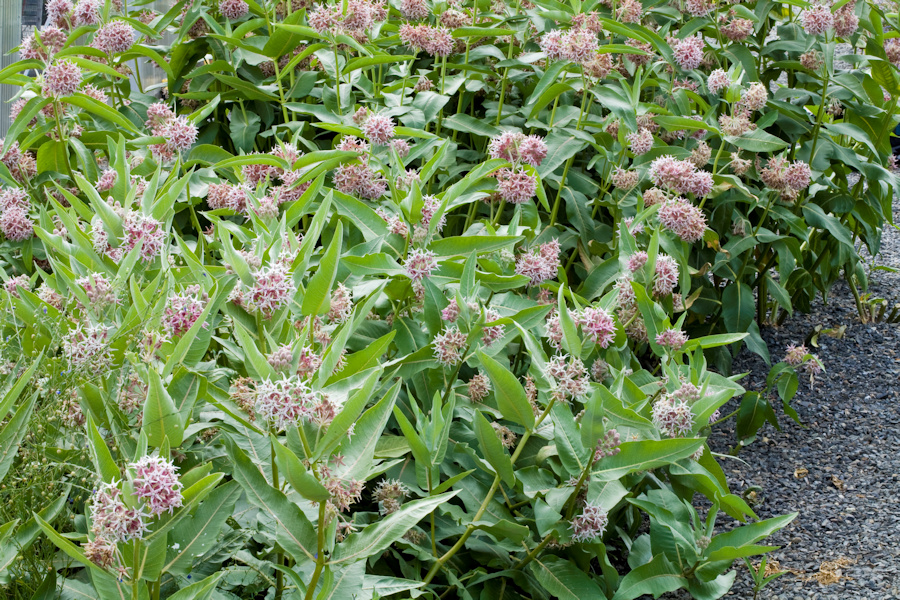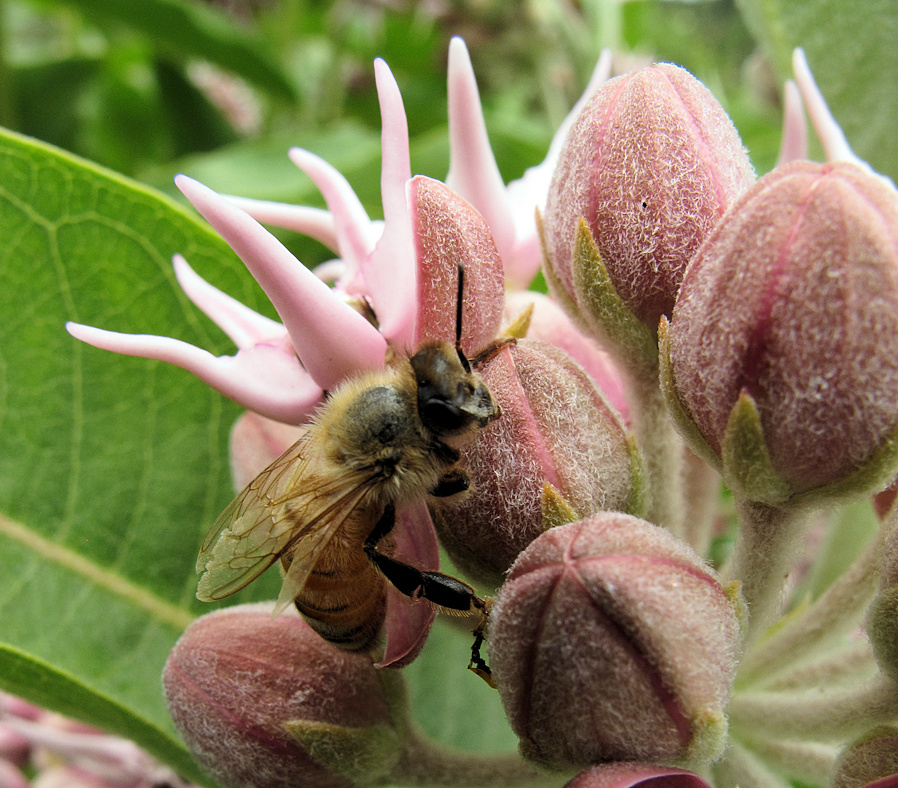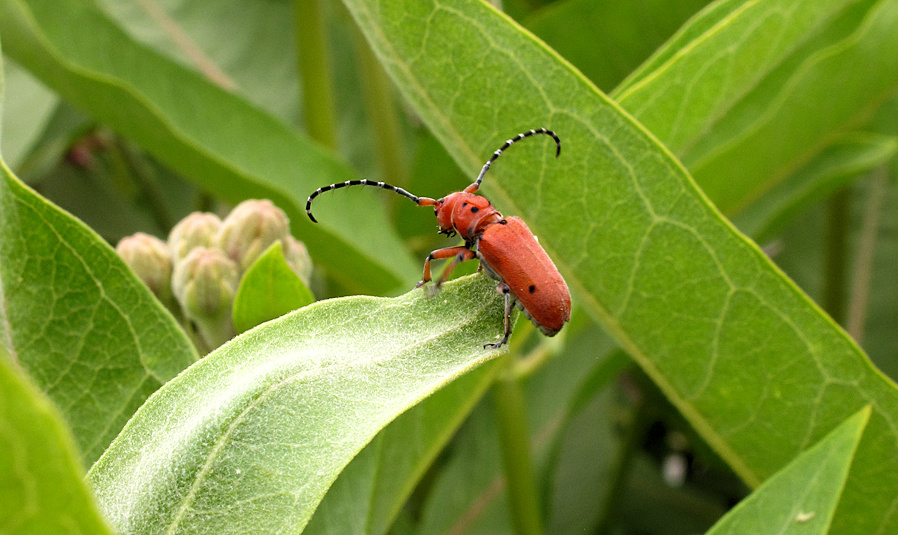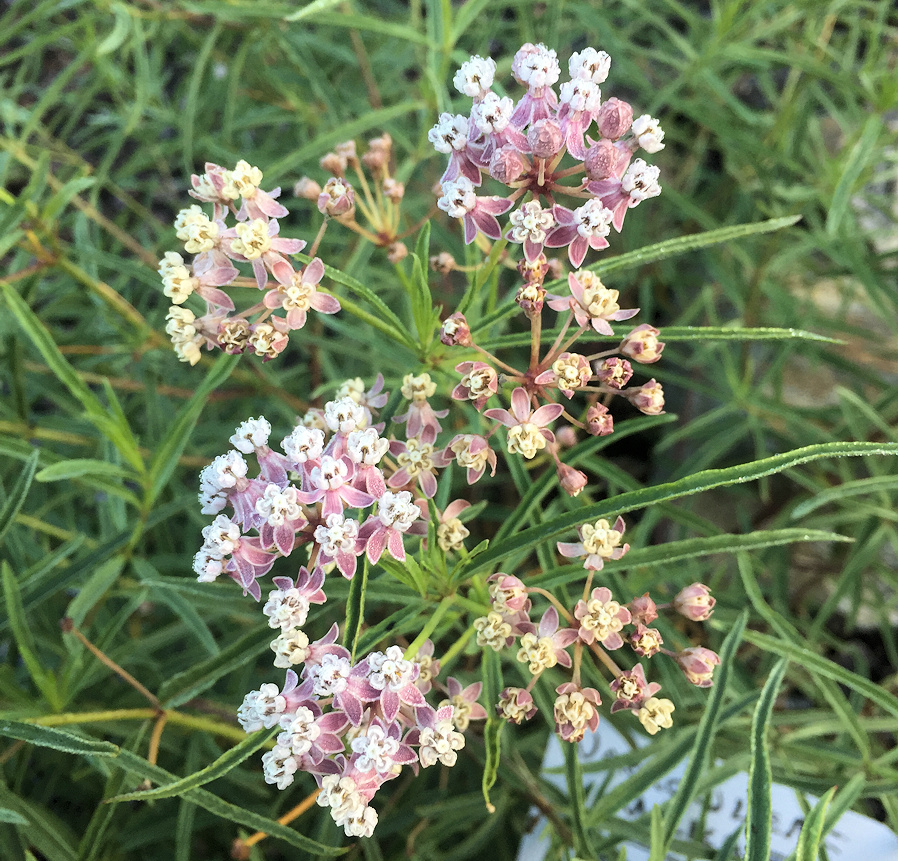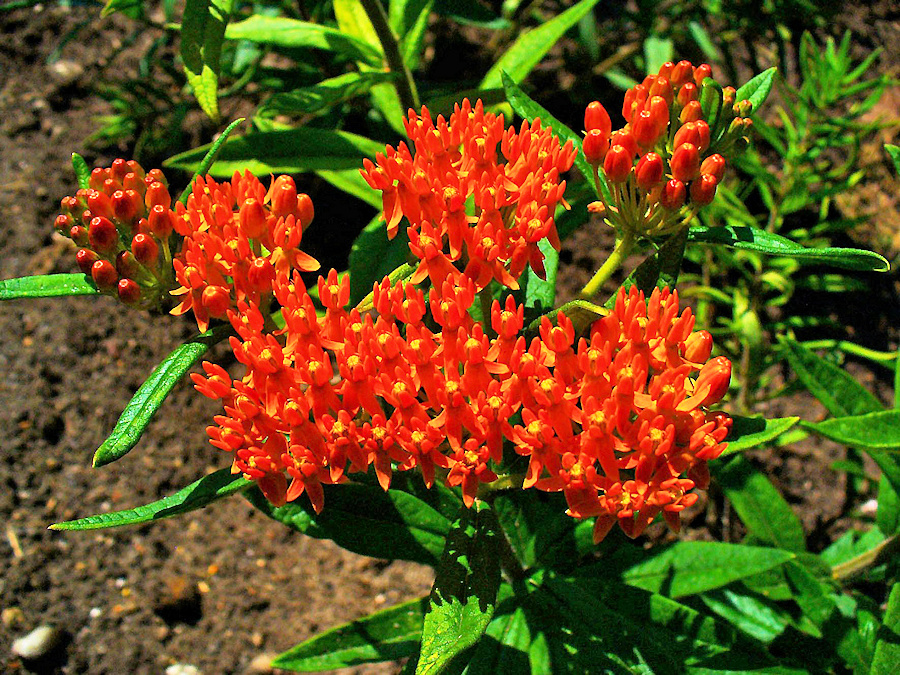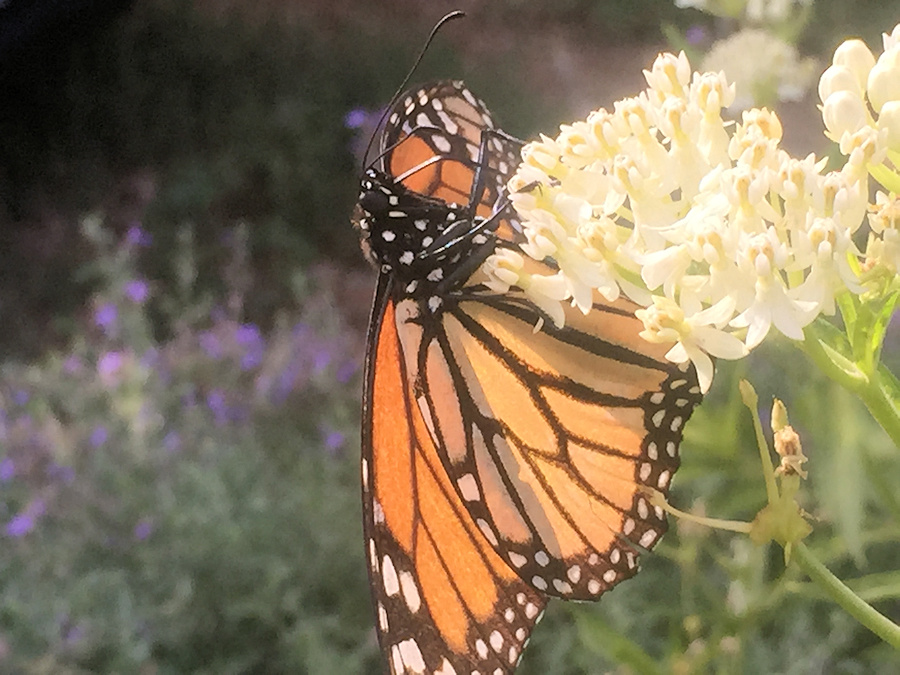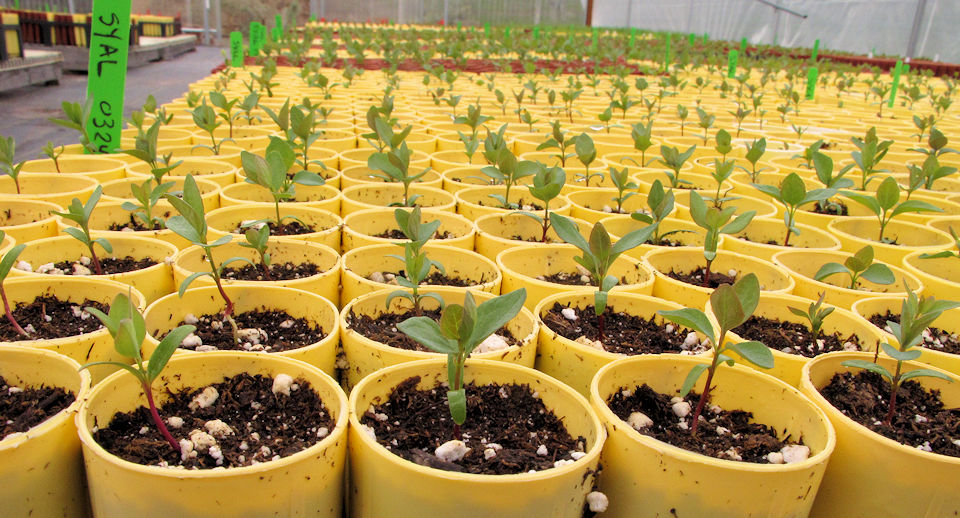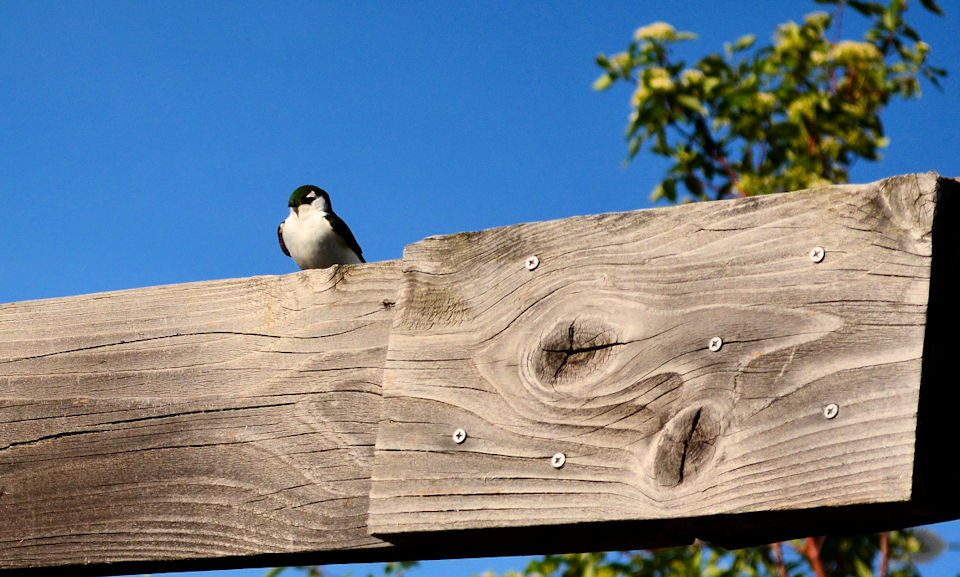Milkweed for Central Washington
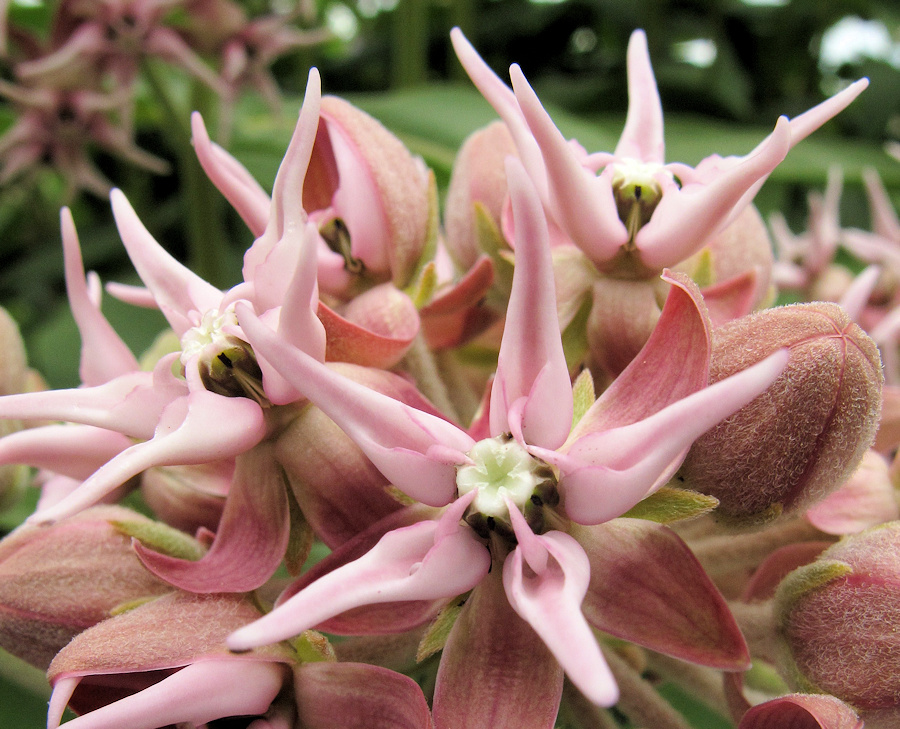
Milkweeds (Asclepias sp.) have been in the news in recent years, mostly because of their critical importance to the monarch butterfly. The larvae of this iconic butterfly must feed on milkweed to develop so the adults seek milkweeds for each generation. There are over eighty species of milkweed found in North America. In Washington we have only three native to the state: one common, one uncommon and one rare.
The most widespread of these is the showy milkweed (Asclepias speciosa), shown in the photos above. Like all milkweeds, it has a wonderfully complex flower structure but unlike others it also has a lovely fragrance. It often grows 3-4′ tall and spreads widely by strong rhizomes, forming extensive patches (not suitable for garden beds!) It will grow readily in almost any sunny area that is not too wet. Many pollinators visit its large, rounded umbels of flowers; I’ve seen three species of butterflies on my patch in the nursery as well as many native bees and honey bees.
Honey bee on showy milkweed flowers
Showy milkweed also hosts the red milkweed beetle (Tetraopes tetraophthalmus). Fun fact! You may have surmised from your Latin knowledge that this insect has four eyes; the base of each antenna bisects the adjacent eye.
The other milkweed native to Central Washington is the narrow-leaved milkweed (A. fascicularis). It is found in this state only in Kittitas, Yakima and Klickitat counties; the seed we grow plants from was collected by a friend close to Naneum Creek north of Ellensburg, This species is more restrained than its cousin showy milkweed, usually growing 1-2′ tall and slowly spreading by rhizomes. The flowers are in dainty umbels and bloom for an extended time. This is a milkweed species I’d consider for the home landscape.
Narrow-leaved milkweed (A. fascicularis)
The only other milkweed found in Washington is the pallid milkweed (A. cryptoceras), found rarely in the far southeastern part of the state, although it is more common in other Western states.
The third milkweed I grow at Derby Canyon Natives is orange butterflyweed (A. tuberosa). This showy species is found throughout the US except in the greater Northwest. Its striking orange color, long bloom time and compact growth habit (typically no more than 2′ tall and 2′ wide) make it a fine choice for a xeric landscape.
Orange butterflyweed (Asclepias tuberosa) Photo from Wikimedia
Monarch butterfly populations have fallen dramatically over the past several decades, both in the largest population that winters in Mexico and moves through the areas east of the Rocky Mountains and in the smaller population that overwinters in California and enters eastern Washington in the summer. Fortunately, both populations have shown some resurgence in recent years, aided by, among other factors, the increased plantings of milkweed. There have been reports of monarch caterpillars in the Okanogan of both Washington and British Columbia the past two summers, and I saw my first monarch in twenty years in 2015 (on a non-native milkweed in my backyard). To follow the status and progress monarchs in Washington I recommend the Facebook site, Monarch Butterflies in the Pacific Northwest.
My 2015 monarch
